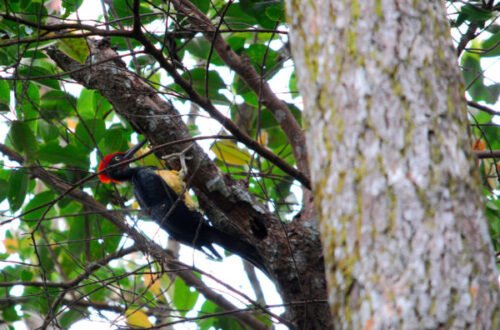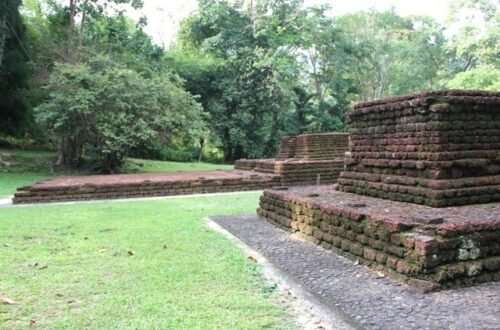The Kelabit Highlands
The Kelabit highlands are located in the remote north east corner of the state of Sarawak in Malaysian Borneo. Bario is the largest settlement with an airport, a minute town center, small eateries, an internet shop, a police station, a clinic, a church and several Tribal longhouses. A network of jungle trails connecting the many little highlands settlements makes for some excellent hiking possibilities! Each settlement is nestled among golden green rice paddies and speckled with tribal homes called longhouses.
The Friendliest People in Malaysia
The highlands are home to the Kelabit people, one of Boneo’s smallest ethnic tribes, with population numbers around 5000, with less than one third living in the highlands. The younger generation especially has moved to cities and towns to pursue higher education and better careers.
A typical stroll around Bario takes you past lolling water buffaloes by the lush paddy fields, kids frolicking nearby and farmers tilling their lands. And only in Kelabit Highlands, you see strangers smiling and greeting you by the side of the road. Kelabit folks are one the friendliest people in Malaysia. The older folks especially, flash a wide smile whenever they see you, extend a handshake and ask a few standard questions like, “when did you arrive,” “how long will you stay,” “where are you from,” etc. Some of the older folks spot the traditional elongated pierced earlobes adorned with heavy brass earrings and Kelabit tattoos.
Best times to visit are all year round but if possible try to avoid the wet season between October and February.
Accommodations
Basic accommodation in guest houses or the tribal longhouses served with traditional meals. This tour is for the truly adventurous, fit and culturally inclined.
The Trails
With its labyrinth jungle and village trails, the Kelabit Highlands offers endless choices of trekking options for people with different fitness levels.
The trails:
1. Bario – Pa Umor, 1-2 hours/each way Pa Umor is a small settlement with a church, longhouse, few wooden houses and wide pastures with a mountain range as backdrop. Lower montane forest species like sunflower fern, pink and red rhododendrons and nepenthes stenophylla (pitcher plants) flank a wide trail that takes you up a couple of gentle hills and a couple of wooden bridges A trail past Pa Umor takes you to the salt lick (main tudtuh), a traditional salt-making facility in the village. If you’re lucky, you may get to see the locals process salt from the spring water boiled in giant vats over roaring flames. The Kelabit only process salt whenever their supply runs out.
2. Around Bario Valley, 1-2 hours/each way Visit the Ulung Palang longhouse communities, a 15-20 minutes’ amble from Bario ‘centre.’ Walk behind the hill at Ulung Palang, towards the junior high school. A clamber up the hill next to the school gives you a 360-degree view of the green valley framed by the glorious mountain range. At the bottom of the hill, walk past the school towards the Bario Asal longhouse. Other longhouse communities like Arur Dalan, Arur Layun and Pa Ramapuh are within comfortable walking distance. The trek to Pa Ramapuh, about 45 minutes, takes you past Kelabit burial ground. An hour’s walk past Pa Ramapuh takes you to a waterfall.
3. Bario-Pa Ukat- Pa Lungan, 4-5 hours/each way. Most trekkers visit the Pa Ukat longhouse and spend the night at Pa Lungan longhouse. Wide trails lined by swaying reeds and ferns, and glimpses of towering peaks in the distance accompany the pleasant hike from Pa Ukat to Pa Lungan. But there are a few stretches of mud-sloshed (after rain) and backbreaking slopes. Make sure you have shoes with good traction soles.
4. Bario-Pa Berang, 4 hours/one way Visit the Penan settlement in Pa Berang, a strenuous walk and one river crossing.
5. Bario-Bakelalan Valley, 2 days/each way Bakelalan Valley is a Lun Bawang settlement nestled on a highland valley just below 1000m from sea level. The village is famous for its Bakelalan rice (similar to Bario’s) and apples. There are a few different routes to Bakelalan, consult your guides about the options. But most trails will pass Kalimantan via Pa Rupai and back to Sarawak border before reaching Bakelalan. Get ready for leeches, sheer slopes and lots of foot slogging. From Bakelalan, a 4-5 hour 4WD ride takes you to Lawas, where you can fly to Miri.
6. Gunung Murud trek, 5-6 days return If you’re fit and ready to climb the tallest peak in Sarawak, head to Gunung Murud (2,423m) The trail takes you from Bario-Pa Ukat-Pa Lungan-Long Repung- Pa Remusu and Murud summit. With its labyrinth jungle and village trails, the Kelabit Highlands offers endless choices of trekking options for people with different fitness levels. Waddle on…
The Birds
The Kelabit Highlands plays host to 274 bird species, out of a total of 622 listed for the whole of Borneo Island. Part of this stems from altitudinal and habitat variations throughout the Highlands.
Though the plains around Bario itself are mostly about 3, 300 feet above sea level, some of the outlying hills are as high a 6,000 feet a.s.l., with Mount Murud itself a good 2000 feet higher! On the other hand, areas such as Pa’ Da’lih and beyond, to Pa’ Ramudu and the Batang Kelapang trail south to Long Bangga are quite a bit lower, at only around 2800 feet a.s.l.. Thus, both the upper end of lowland species as well as true sub-montane species are found here, along with the higher montane specialists.
The Botanicals
Habitat variations extends the list with niche specialists from rice fields and orchards to tall grass and scrub, stunted kerangas pole forests, sub-montane dipterocarp forests, and mossy forests in the higher montane areas.




